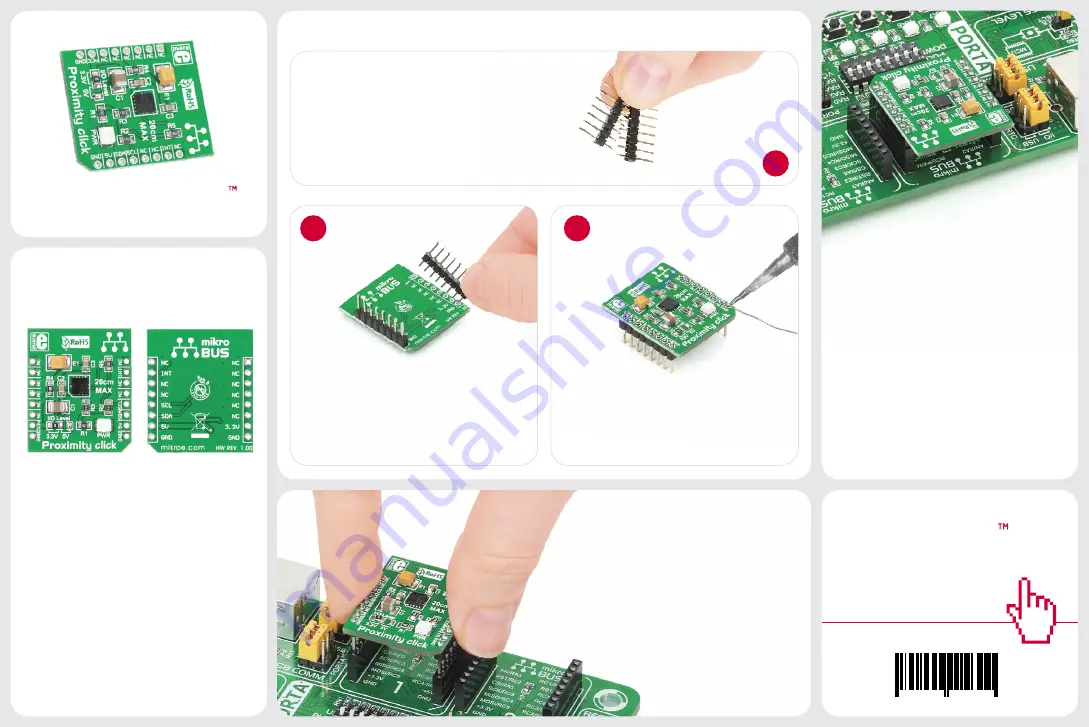
1. Introduction
Once you have soldered the headers your
board is ready to be placed into desired
mikroBUS
™
socket. Make sure to align the
cut in the lower-right part of the board
with the markings on the silkscreen at
the mikroBUS
™
socket. If all of the pins are
aligned correctly, push the board all
the way into the socket.
3. Plugging the board in
2
3
2. Soldering the headers
1
4. Essential features
Turn the board upward again. Make sure
to align the headers so that they are
perpendicular to the board, then solder the
pins carefully.
Turn the board upside down so that
bottom side is facing you upwards.
Place shorter pins of the header into the
appropriate soldering pads.
Before using your click
™
board, make sure
to solder 1x8 male headers to both left
and right side of the board. Two 1x8 male
headers are included with the board in
the package.
click
BOARD
www.mikroe.com
Proximity click Manual
ver. 1.00
0 100000 024300
Proximity click
™
is an accessory board in
mikroBUS
™
form factor. It’s a compact and
easy solution for adding proximity sensor
to your design. It features
VCNL4010
proximity and ambient light sensor.
Proximity click
™
communicates with the
target board microcontroller via
mikroBUS
™
I
2
C (SDA, SCL) and INT lines. The board is
designed to use 3.3V power supply and
3.3V or 5V I/O voltage levels. LED diode
(GREEN) indicates the presence of power
supply.
Proximity
click
Proximity click
™
with it’s
VCNL4010
IC
combines an infrared emitter and PIN
photodiode for proximity measurement with
a range of up to 20cm. It can also be used
as ambient light sensor. The
VCNL4010
has
a 16bit resolution which ensures excellent
cross talk immunity. All these features make
this board ideal for consumer and industrial
applications, mobile phones, digital camera,
tablet PC application and many more.


